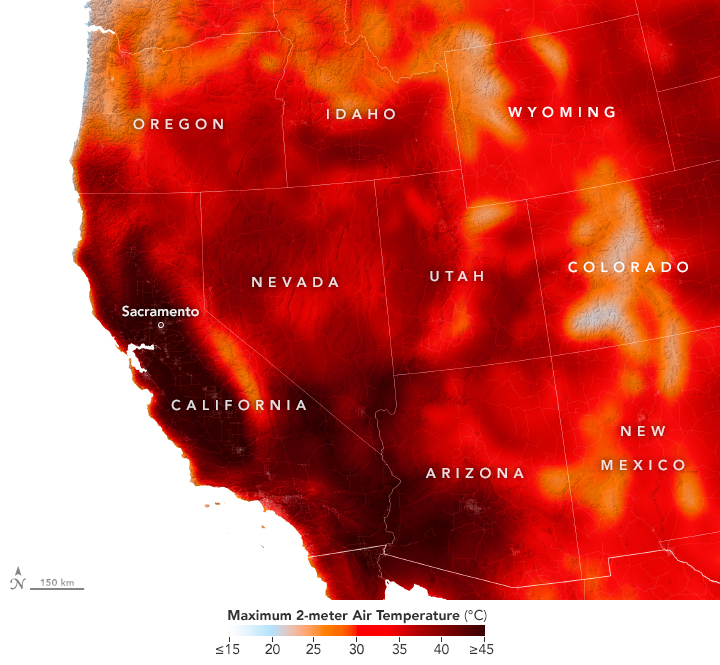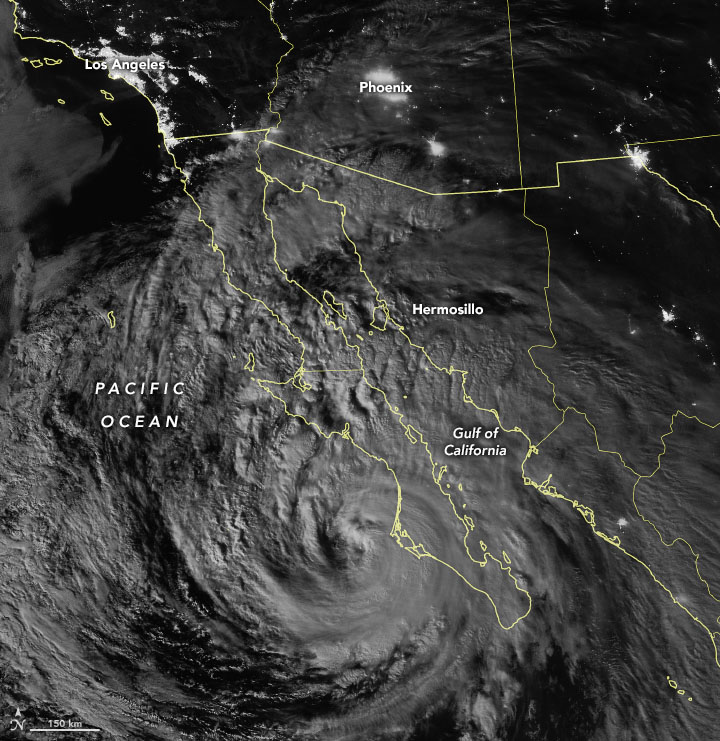
Western heatwave broken by tropical storm
In early September 2022, a long-lasting heat dome settled over the western U.S. And it brought scorching temperatures that set all-time record highs. Plus, the extreme heat fueled wildfires and stressed the power grid. But that was before an eastern Pacific tropical storm moved into the region and broke the warm spell.
Western heatwave brought multiple warnings
On September 7, 2022, more than 61 million people were under active extreme heat advisories, watches, and warnings. In fact, excessive heat warnings were issued for much of California and parts of western Arizona and southern Nevada. Temperatures reached well into the triple digits (Fahrenheit). Plus, some areas exhibited record-high nighttime lows and relatively high dew points. Naturally, these contribute to the health effects of heat.
By the way, many California cities recorded all-time high temperatures ranging into the mid-110s Fahrenheit (around 45 Celsius), such as Santa Rosa, Napa, Livermore, Redwood City, San Jose, and King City. Also, both Merced and Sacramento reached 116 F (46.7 C), their highest temperatures since record-keeping began in 1899 and 1877 respectively. Therefore, they broke the Sacramento record, which was previously 110°F (43.3 C), by a significant margin.
Brian Kahn, an atmospheric scientist at NASA’s Jet Propulsion Laboratory, said:
If you look at the sheer magnitude of all-time high temperatures that were set – in any month, in any year – this heatwave is definitely unique. But it is also worth noting that this heatwave was not limited to California. As all-time record highs were tied or broken in other western states as well.
New metric developed to determine heatwave severity
Kahn and JPL climate scientist Glynn Hulley recently studied Southern California heatwaves and found that they are becoming more frequent, more intense, and longer-lasting. Plus, they are also exhibiting higher nighttime temperatures and humidity, particularly in inland urban areas. So, to account for the various factors in a heatwave, the researchers developed a metric called the heat wave severity index. Then, they derive the metric by multiplying the average heat index, which accounts for the effects of temperature and humidity, by the heatwave’s duration.
Given the combined intensity and duration of the September 2022 event, Hulley said:
It will likely rank as one of the worst heatwaves of the past four decades.
Extreme heat has caused or contributed to the deaths of more than 700 Americans per year on average over the past 30 years. As a matter of fact, heat is the leading cause of weather-related death in the U.S., causing more deaths than hurricanes, tornadoes, floods, or extreme cold.

Tropical Storm Kay brought drenching rain and cooler temperatures
Finally, the heatwave was broken. When on September 9, cooler temperatures began arriving with Tropical Storm Kay. The storm dumped nearly a year’s worth of rain across parts southern California.
Bottom line: As a consequence of the drenching rain and cooler temperatures brought by Tropical Storm Kay, the western heatwave in the United States was finally broken.











